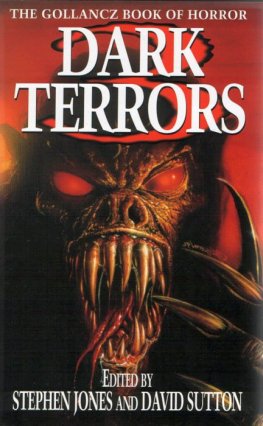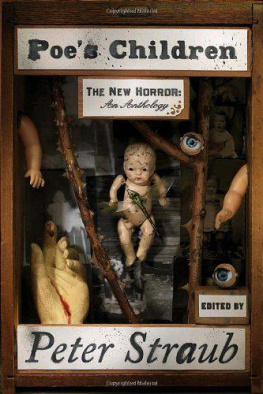Copyright 2022 HOWL Society Press Howls From the Dark Ages
Copyright 2022 Christopher Buehlman Foreword
Copyright 2022 Caleb Stephens The Crowing
Copyright 2022 Philippa Evans Angelus
Copyright 2022 J.L. Kiefer Palette
Copyright 2022 Peter Ong Cook Brother Cornelius
Copyright 2022 Hailey Piper In Thrall to This Good Earth
Copyright 2022 Lindsey Ragsdale In Every Drop
Copyright 2022 Ethan Yoder Deus Vult
Copyright 2022 M.E. Bronstein The Final Book of Sainte Foys Miracles
Copyright 2022 Michelle Tang A Dowry for Your Hand
Copyright 2022 Cody Goodfellow The Mouth of Hell
Copyright 2022 Christopher OHalloran The Lady of Leer Castle
Copyright 2022 Bridget D. Brave Schizzare
Copyright 2022 Patrick Barb The King of Youth vs. The Knight of Death
Copyright 2022 C.B. Jones The Forgotten Valley
Copyright 2022 Brian Evenson The Fourth Scene
Copyright 2022 Stevie Edwards White Owl
Copyright 2022 David Worn A Dark Quadrivium
Copyright 2022 Jessica Peter The Lai of the Danse Macabre
All rights reserved. No part of this book may be reproduced in any manner without the express written consent of the publisher, except in the case of brief excerpts in critical reviews or articles. All inquiries should be addressed to bark@howlsociety.com.
Editing by P.L. McMillan and Solomon Forse
Formatting by Molly Halstead
Cover art by Joe Radkins
Cover design by Molly Halstead
Howls From the Dark Ages published by HOWL Society Press
Visit our website at howlsociety.com
Table of Contents
For a complete list of content warnings, please visit our website: https://howlsociety.com/anthology/content-warnings-hftda/
Praise for Howls from the Dark Ages
Chilling and horrifying, Howls from the Dark Ages collects multiple stories from a wide range of authors to bring the reader terror that transcends centuries. I greatly enjoyed this collection.
Sonora Taylor, award-winning author of Little Paranoias: Stories and Seeing Things
A thrilling collection that pulls no punches, Howls From the Dark Ages returns the reader to the point in history when the human misery index was at an all-time high.
Donnie Goodman, author of The Razorblades in My Head
These stories offer a rhythmic pull, dragging its readers into the past through the lulling lyricism of woven wordsyou wont be able to tear your eyes, heart, mind, or soul away from its mesmerizing chaosnor will you want to.
Ai Jiang, author featured in Fantasy and Science Fiction, The Dark, and The Deadlands
Howls from the Dark Ages offers a visceral assortment of medieval horror and dark fantasy stories from eighteen passionate new and established authors. I thoroughly enjoyed this anthology, which read like a gruesome sequel to The Canterbury Tales!
Christi Nogle, author of Beulah
Amid crumbling castles and decaying flesh, come walk the wild woods, drag your feet through the black mud of perdition, face beasts from the aether, and fight for life and sanity against dark and terrible powers whose very existence deny both.
Mike Adamson, author featured in Weird Tales, Abyss and Apex, and Lovecraftiana
These stories brilliantly capture the magic, grime, and fever-dream faith of the medieval world. In the hands of these macabre wordsmiths, the Dark Ages truly live up to their name.
Eric Raglin, author of Nightmare Yearnings
Howls From the Dark Ages is a brutal, sometimes heart-wrenching exploration of medieval horrorThe stories are compelling and unique.
LP Hernandez, author of Stargazers, Cemetery Gates Media
Moonlit castles, foggy moors, ancient religions, blood smeared knights, corrupt kings, woodland witches, and something unfathomable howling just outside the ramparts. This anthology has everything a Dark Fantasy fan could ask for. Atmospheric and uncanny through and through.
Corey Farrenkopf, writer/librarian
Writing Medieval Horror Fiction for Fun andWell, Mostly for Fun.
Christopher Buehlman
In the summer of 2010, I realized a lifelong dream and sold my 1930s Southern Gothic werewolf novel, Those Across the River, to Penguin, one of the biggest and most reputable publishers in the English-speaking world. Confidence seemed high at Berkeley, my division, that Those Across would be the next big thing in horror.
I was elated.
The book would come out the following year, and Penguin was ready to contract me to write a follow-up. When my editor asked me what Id like to write next, I said, I want to write about plague.
I had been weaned on Stephen Kings The Stand, and as a teenager I would read any book at all about pandemics, from cheeseball Stand knock-offs to Michael Crichtons brilliantly understated The Andromeda Strain. But I wasnt interested in writing about a plague happening today.
I wanted to write about The Plague happening when The Plague happened. The Plague.
Capitalized, please.
That event in the 1340s that killed as many as two out of three medieval Europeans and, as one would expect, changed everything. By 1350, the time called the High Middle Ages was over, and with it went bright paintings featuring Summer and Spring; the colors of the art produced by the collective psyche grew autumnal now. The Dance of Death came into vogue, reminding us that bishops, bakers, mothers, and queens must all depart when summoned by that grinning, ubiquitous skeleton that tugged, and pulled, and sometimes bit them off the page. Laborers, their numbers thinned, walked off the farms where they had been effectively enslaved, and now sold their labor dearly. I daresay they sold it for something like what it was actually worth. Sound familiar? Plus a change
But rendering the summer and fall of 1348, the timeline framed in my second novel, Between Two Fires, meant understanding more than just the mechanisms and effect of the Black Death. It meant trying to understand, as best as I could, the mindset of the late medieval man or woman. It meant learning about the architecture of the period generally, and the layout of certain towns and neighborhoods specifically. It meant learning how people made war; what they ate; with whom they hunted, traveled, or made love; how they might be named; how they might be dressed.
First-hand accounts or illustrations were of course invaluable, as were insightful texts written after the fact. But the knowledge I needed would lead me to new depths of research. For example, I could find no sources in English telling me where bridges crossed the Seine in 1348 Paris. I knew about the ironically named Pont Neuf, or New Bridge, now the oldest bridge spanning that river; but since it dated from the 1500s, the Pont Neuf was not even a sketch when the Black Death came knocking. I knew about a big stone bridge called Le Grand Pont, but that collapsed in the 1200s. How the hell did 14th century Parisians get from the Right Bank to le de la Cit to The Latin Quarter? To find out, I tapped into my college majorFrenchto read a French-language Atlas of Medieval Paris, which turned out to be the second most valuable single book I made use of, right after Barbara Tuchmans masterpiece, A Distant Mirror. A lot of work for a sentence or two, I know.
I could have just said they crossed the bridge, and a lot of authors, understandably, would have done so in that situation. But Im the kind of writer who wants to know what bridge, and to name it; not to show off or be pedantic, but to establish with the reader the kind of casual authority that true stories ring with. You dont go from Sausalito to San Francisco across a bridge; you cross the Golden Gate Bridge, dont you? You dont walk up a road to Holyrood Castle in Edinburgh; you walk the Royal Mile. And when you approach le de la Cit from the north in 1348, you damn well walk across the Pont aux Meuniers with its thirteen water mills at the bottom, because the Pont aux Changeurs is just for wheeled traffic, and youll get run over by a shit wagon. And no, I didnt research whether or not there were shit wagons before I wrote that, but, if I had put one in the novel, you can bet I would have.



![Dzhozef Nassis - SNAFU: Heroes [An Anthology of Military Horror]](/uploads/posts/book/864309/thumbs/dzhozef-nassis-snafu-heroes-an-anthology-of.jpg)









